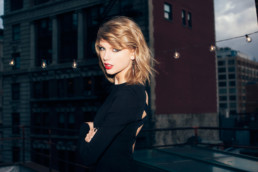Content marketing is a fantastic tool for brands to build audiences, authority, and trust online.
But it’s easy for brands – and content marketers – to fall into familiar, mundane patterns.
I’m talking about tried and true content marketing strategies like a company blog, email newsletter, case studies, ebooks and white papers, and video content.
The problem I’m starting to see is that everyone’s doing the same thing.
And that’s understandable. These strategies have proven themselves time and time again. Many of these patterns do work, or have worked.
But now that we’ve reached “peak content” or content saturation, brands need to start getting more creative with the content they’re producing in order to achieve cut-through.
I’m not saying do away with the blog. Blogs are great. Email newsletters are fantastic. Keep them up. They’re our bread and butter.
I’m saying it’s time to start thinking about ways your brand can create content that stands out. Content that gets people talking. Content that people want to share with their friends. Content that’s engaging and exciting and imaginative. Content that breaks the rules. Content that makes use of new and emerging technologies.
Today, we have technologies like virtual reality (VR), augmented reality (AR), and mixed reality (MR), 360 video, online games, podcasts, immersive and interactive documentaries – all of which can be used to tell your brand’s story.
Harnessing these technologies and creating unique experiences for your audience, clients, and customers will position your business at the cutting-edge of your industry or niche.
The important thing is to not use these technologies for the sake of it, or to seem cool or edgy. There should always be a reason why. The technology you use or creative risk you take should support and enhance the story you’re telling.
Creative risks are about trying something different, being willing to innovate, and trusting that in order to stand out you can’t only do what everyone else is doing.
We’re starting to see some brands take creative risks with content. But there’s plenty of room for more brands to break with tradition and push the boundaries of content marketing and brand storytelling.
If you’re wondering what I’m talking about or looking to be inspired, here are a few creative content marketing examples that have caught my eye over the past year.
7 cutting edge content marketing examples
1. Bears Ears – Patagonia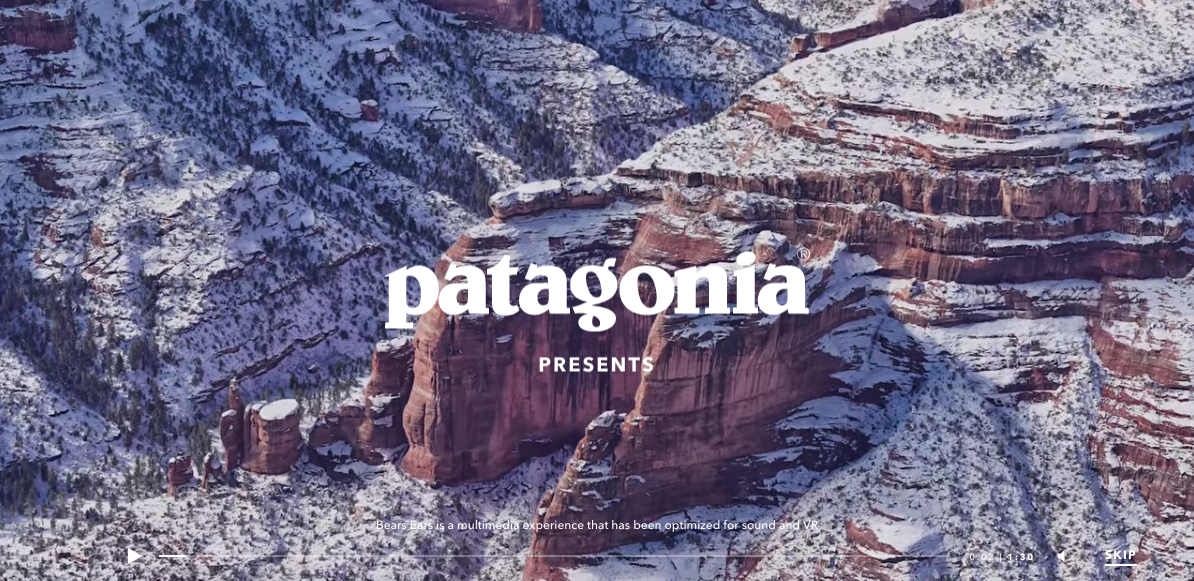
In my opinion, Patagonia is leading the way when it comes to content marketing and brand storytelling. They consistently create content that, on the surface of it, has no agenda other than to educate, advocate, and entertain.
Patagonia’s interactive documentary project on Bears Ears, a national monument in the United States, does all three of those things.
The project was part of Patagonia’s campaign to protect the culturally significant landscape after the Trump administration moved to reduce its size.
The quality of the content is world class. The videos and 360 footage are stunning. The storytelling is on par with what you’d expect from The New York Times.
It also speaks to the hearts and minds of Patagonia’s audience – people who live for the outdoors and care about conservation.
2. Otherness – Grayson Gilmour 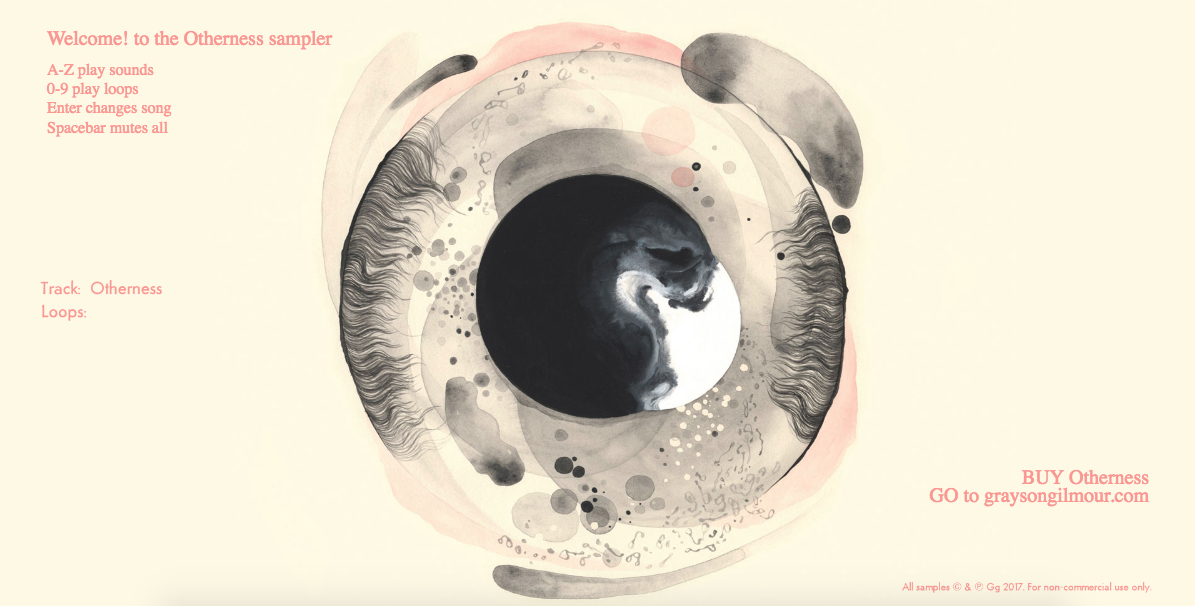
This isn’t a typical example of a company doing content marketing, but it’s still relevant.
Grayson Gilmour is a Wellington musician. To promote his latest album, Otherness, Gilmour created an interactive website where he isolated a bunch of loops and samples from one of his songs and invited users to create their own remix.
Essentially this is a brand (Gilmour) creating content (the interactive website) to engage users in a unique experience that may lead to them buying his new album.
Playing around with the loops and samples is a lot of fun and even though I haven’t yet purchased Gimour’s album, I’ve returned to the website several times and I think better of him and his music because of it.
There’s so much potential for other brands to create interactive experience for their audiences. It’s a little more memorable than a blog post.
3. The Uber Game – The Financial Times 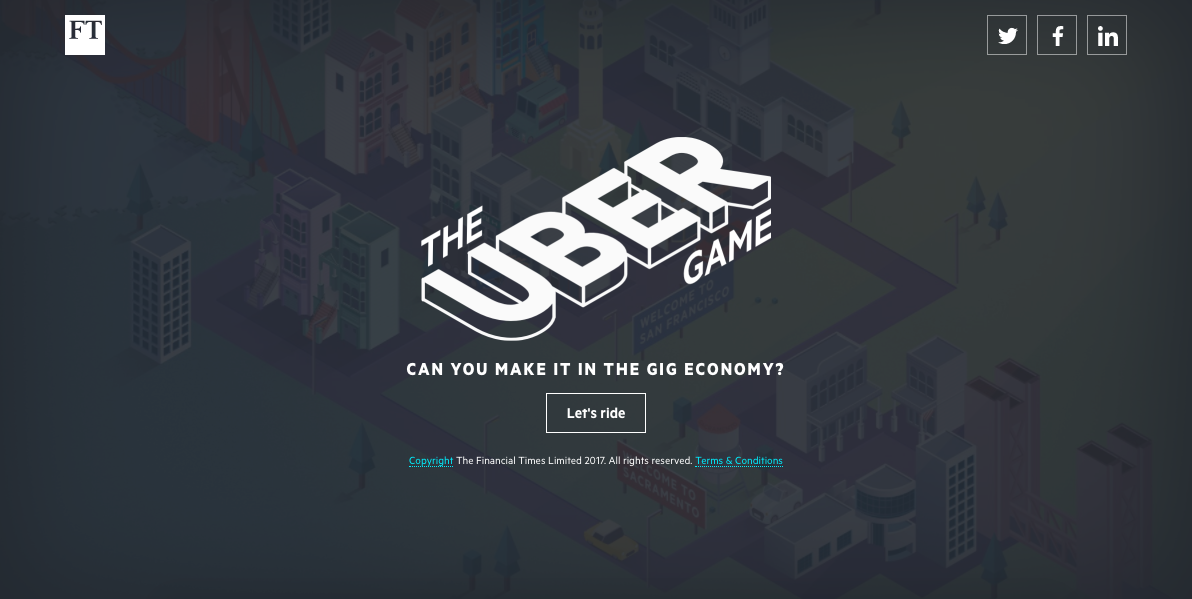
This is gamification done right. The Uber Game is a “choose your own adventure” experience that challenges users to survive as an Uber driver in the gig economy. Over the course of a month you’re required to make decisions about which passengers to pick up, the hours you work, repairing damage to your vehicle, and your attitude to difficult customers. The game is based on real reporting, including interviews with dozens of Uber drivers.
While this game isn’t content marketing (it’s essentially journalism), it’s an excellent example of what brands could do to engage people in a creative way. This game could have been created by a financial services company, or a vehicle repair company, or even a recruitment company.
Are there ways that your brand’s story could be told through an interactive game?
4. A Digital Volcano – GE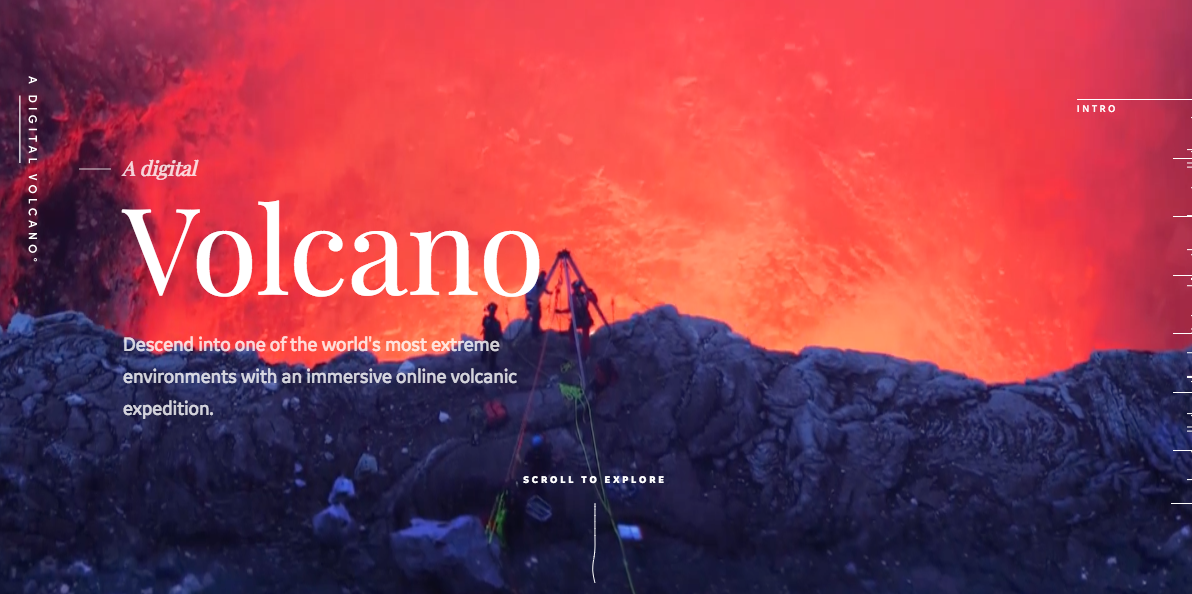
This is truly an incredible storytelling feat by General Electric. It’s beautiful, intuitive, and informative. GE strives to be at the cutting-edge of digital and technological innovation and A Digital Volcano provides a platform for GE to tell that story.
In short, a team of volcano experts equipped with GE technology climbed into the maw of Nicaragua’s Masaya volcano and installed wireless sensors that collect pressure, tremors, humidity levels and other data.
A year later, the team collected enough data to create a digital version of the lava lake that allowed scientists to predict its next moves and provide a digital early warning system on one of the world’s most active volcanoes.
The project is about the dangers that volcanos pose to the millions of people who live near them and how GE is trying to use technology to better predict eruptions and reduce the harm caused by volcanoes.
This story could have been told through a press release, but GE decided to go the extra mile.
5. Plantation to Prison – Netflix/New York Times
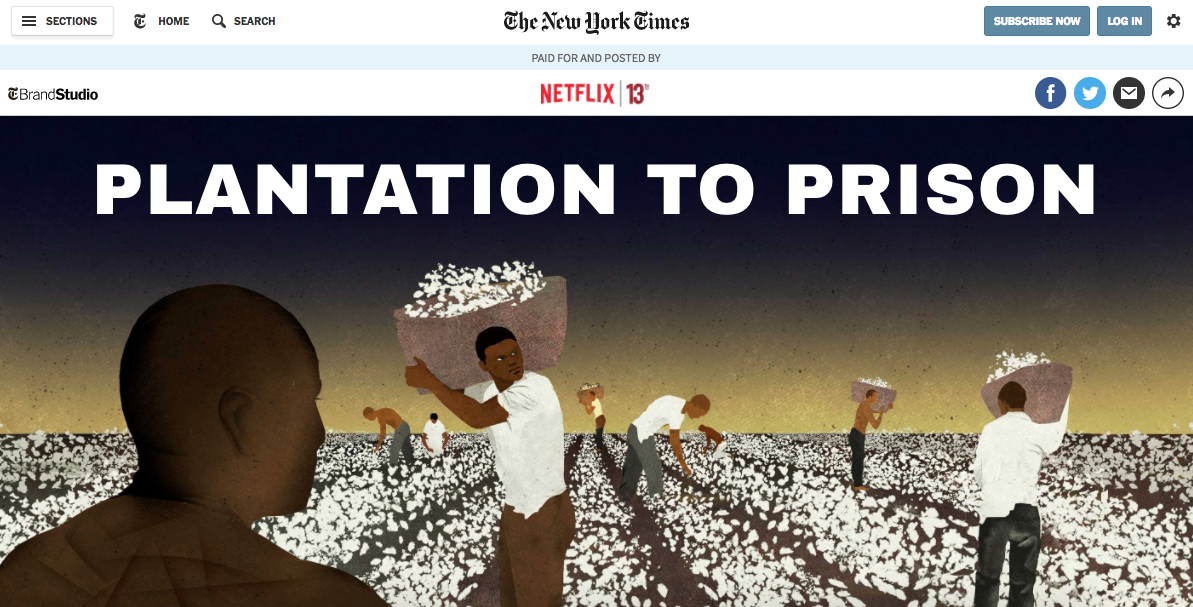
Plantation to Prison is an example of native advertising by Netflix in collaboration with the New York Times.
To promote an original documentary, The 13th, about the history of racial inequality in the United States, Netflix took a creative risk by creating a bold piece of content that was published on the New York Times website.
The content looks and feels like an excellent, multimedia journalism project about the mass incarceration of black people in the United States, complete with real reporting, data, photos, video, and animation.
Netflix took a similar approach when promoting Narcos, a series about drug cartel kingpin Pablo Escobar. This time, Netflix partnered with The Wall Street Journal on the multimedia project Cocainenomics. It’s pretty cool.
6. DTR Podcast – Tinder/Gimlet Creative
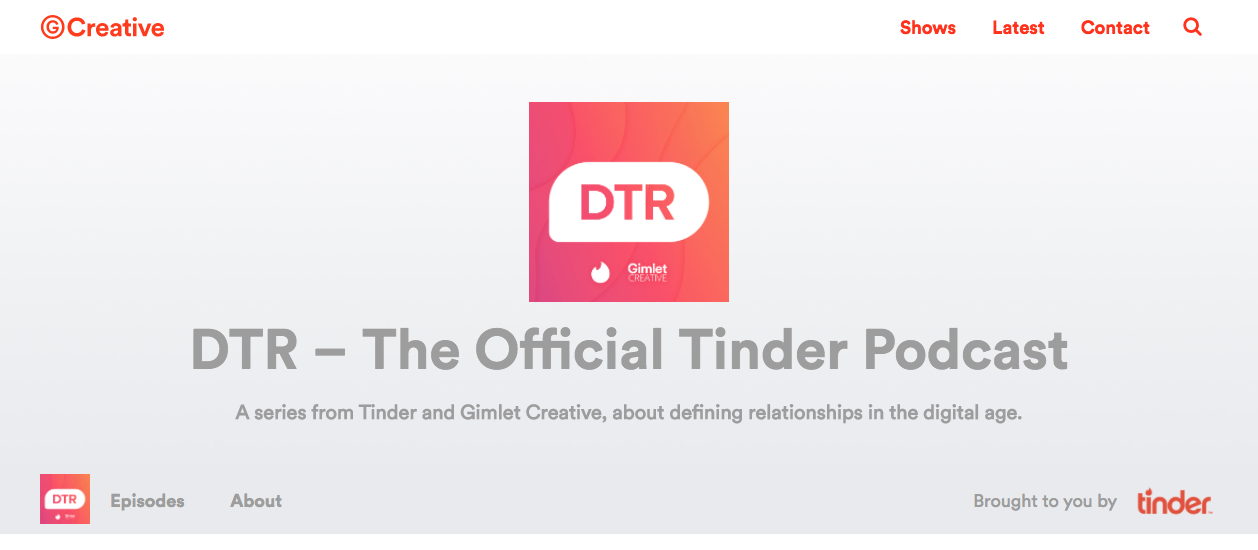
If you don’t already know that Tinder has its own podcast, well, now you know. Branded podcasts are a thing. That’s because a lot of people listen to podcasts these days. Research has found that 73 million people over the age of 12 listen to podcasts monthly.
DTR by Tinder doesn’t sound like a branded podcast – and that’s important. It features stories about relationships and dating advice. It’s produced exceptionally well. It’s light-hearted, funny. It’s basically everything that Tinder’s users would want in a podcast.
This is an example of a brand leveraging a popular content format and existing distribution channels to reach a wider audience. A lot of brands are starting their own podcasts, but Tinder is one that’s doing it right.
7. Are You Good Enough to be a Tennis Line Judge? – Wall Street Journal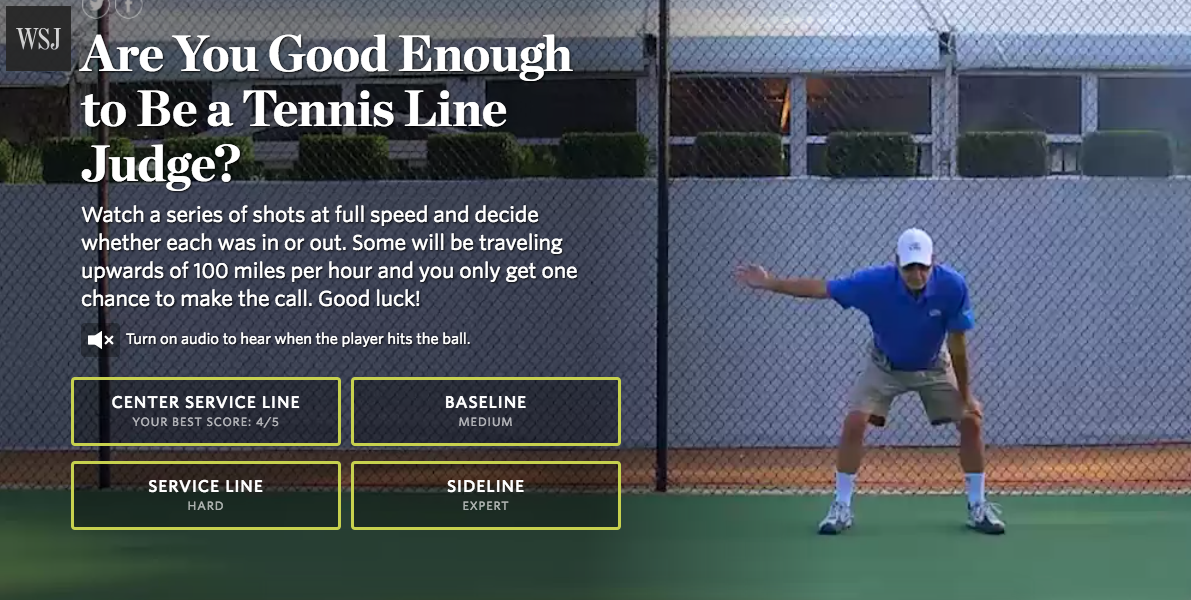
I had to include this one because it’s so much fun! Again, it’s not content marketing (I know!) as it’s produced by a news outlet, but it’s an example of how brands could think creatively. There’s no reason why Wilson or Head couldn’t have thought of this.
Basically, this piece of content puts you in the shoes of a tennis line judge. You have to watch balls being hit at full speed and then decide whether they’re in or out.
It’s quite addictive and an interesting way to tell a tennis story. I’m not sure of the wider context for this. Maybe there were a few controversial calls at a major open? Regardless, this will likely make your more forgiving of match officials when calls don’t go your way in future.
Thinking outside the box
I hope you’ve found some inspiration in these examples of risky, creative content marketing and brand storytelling. It’s becoming more important for brands to think outside the box in order to stand out and these are some of the brands that are already doing that. If you’re looking to invest in content marketing, consider looking beyond the company blog and towards a more engaging, immersive experience for your audience.
The Content Lab is partnering with New Zealand immersive storytelling studio Vanishing Point on cutting edge, multimedia projects, including VR, 360 video, interactive documentaries, and more. If you’re interested in talking about creative content marketing ideas for your business, get in touch.




